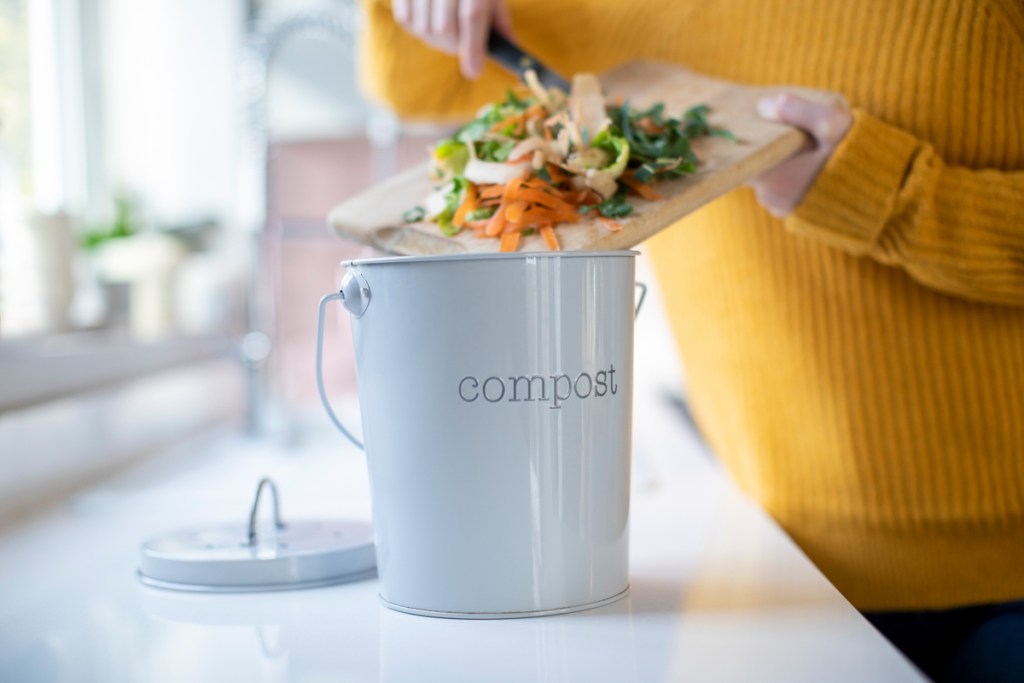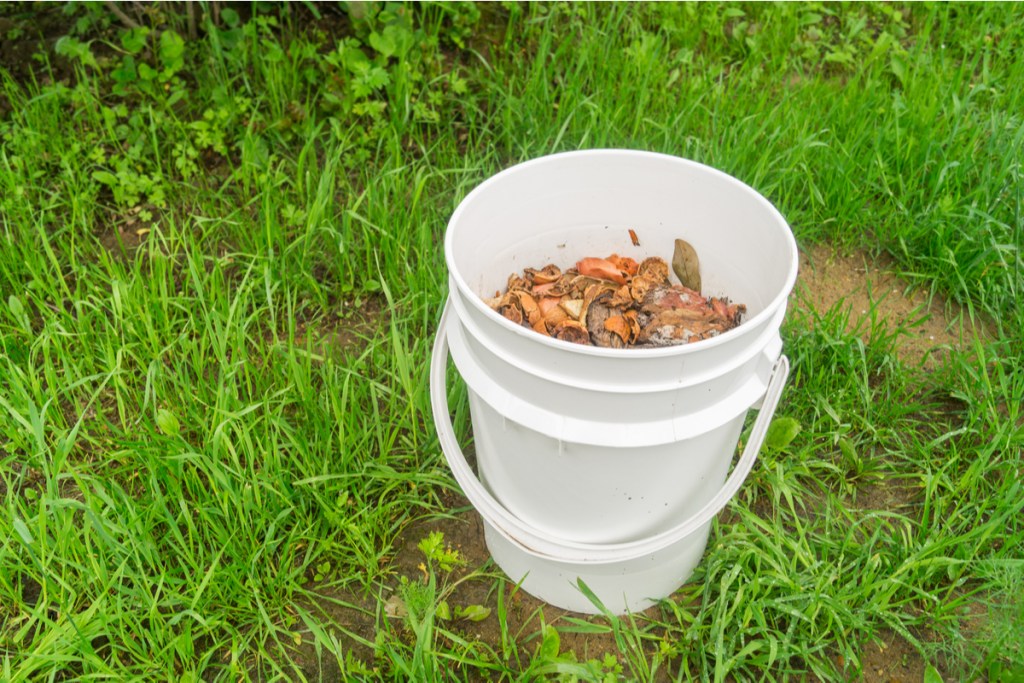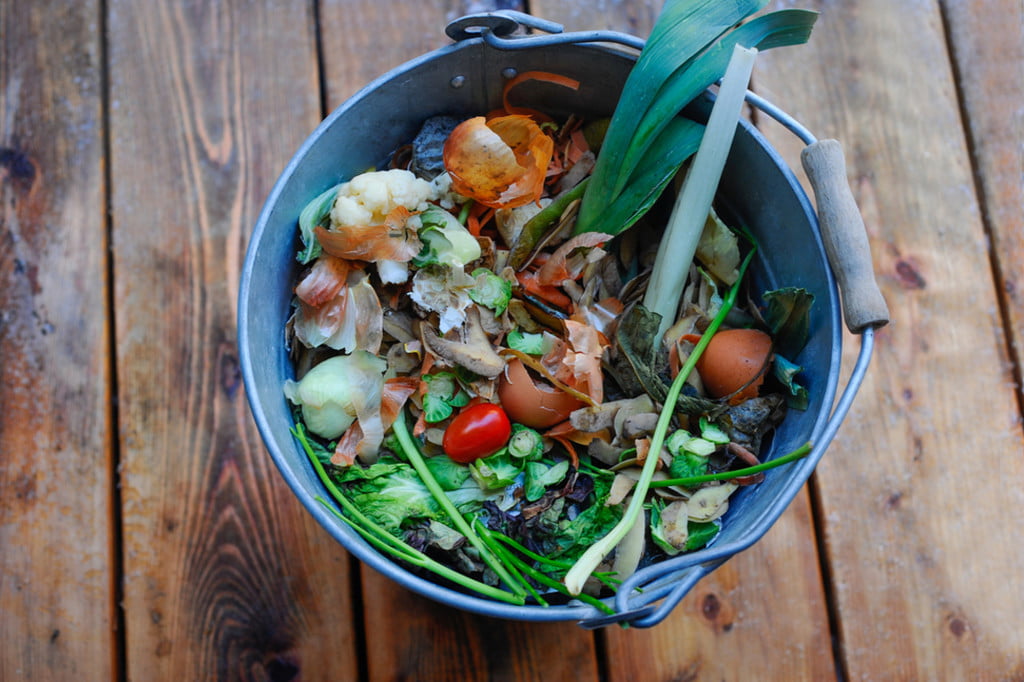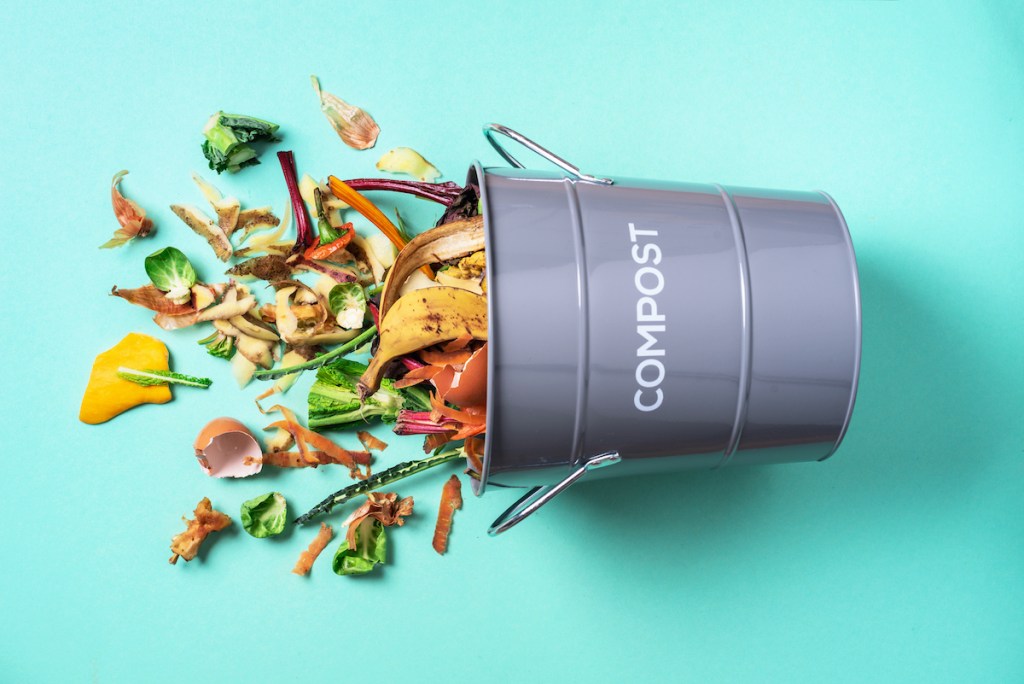If you want to compost at home, then learning how to make a compost bin might be at the top of your list. Compost bins come in many different shapes and sizes. There are massive wooden boxes, intricate multi-chamber structures, and even plastic ones that rotate. You don’t need anything fancy or large to make a decent compost bin, though. You can make compost for your garden in a much smaller space.
If you’re looking for how to get started composting, here’s how to create your very own simple DIY compost bin starting with just a 5-gallon bucket from any hardware or general store.
This method is easy to downsize or upsize to meet your needs. If you’re living alone or don’t produce many scraps for composting, you can follow these same directions with a smaller bucket. On the other hand, if you’re living with multiple people or produce a lot of scraps, these instructions apply just as well to a larger bucket or multiple buckets.

Getting started
Before you can start your compost bucket, you'll need to make sure your materials are appropriate.
Step 1: Test your materials to make sure everything fits together snuggly.
The lid for your bucket should fit securely, and the sticks, dowel rods, or old strainer should likewise fit in the bottom of the bucket.
Step 2: Drill air holes in the top, bottom, and sides of the bucket.
You’ll want more holes on the top and bottom than on the sides, and the holes should be less than an inch in diameter. This is an important step to ensure your compost bin has proper drainage, which it needs to properly compost.
Step 3: If your bucket has a thick handle, you may want to remove it with pliers.
This isn’t necessary, but it does make it easier to roll your bucket.
Step 4: Fit the sticks, dowel rods, or old strainer into the bottom of your bucket.
These are there to keep your drainage holes from getting clogged with compost. If the holes get stopped up, excess water can build up, which leads to mold.

Starting the compost heap
Now that your bucket is set up, it's time to get started on the fun part: composting!
Step 1: Start with a layer of brown material.
Dried leaves, straw, hay, newspaper, or even a little cardboard will work.
Step 2: Add a layer of green material, such as fresh lawn clippings, vegetable scraps, and fruit peels.
Step 3: Alternate brown and green layers until the bucket is half full and then add a light sprinkling of water.
Step 4: Continue alternating layers until either the bucket is full or you’ve run out of material.
Step 5: Every time you add scraps to the bucket, secure the lid and then roll the bucket across the ground.
You don’t need to roll it far, just back and forth a few times. This mixes the compost, which increases airflow and helps to prevent excess moisture buildup. You can also mix the compost with a shovel or large stick.

Issues to be aware of
Your compost bucket will mostly take care of itself, but there are still some matters to keep in mind.
Step 1: Be aware of where you’re putting your bin. It can be placed in either the sun or the shade, but if it’s in the sun, the compost materials will degrade much faster.
Step 2: Add anything organic to your compost.
However, there are a few things to keep in mind. Kitchen scraps, such as peels or rinds, should be rinsed or washed first if they were treated with pesticides. Fish and meat can be added to compost, but they smell when breaking down and often attract animals. Wood and bone can break down but take significantly longer, so you should avoid putting them in your compost.
If you want to compost these things, cook the meat or fish first and break any wood or bone into smaller pieces before adding them.

FAQ
Why is my compost drying out?
Most issues with compost bins are caused by an imbalance of brown and green material, a moisture buildup, or a lack of airflow. If your compost is drying out, decomposition will slow to a crawl. Add more green material or a light sprinkling of water and mix thoroughly.
Why does my compost smell like rotting food?
That typically means it has too much green material. Add brown material and mix.
Why is my compost wet?
If your compost is more than slightly damp, there is too much water. Add brown material and mix your compost. You may also need to check that all your air and drainage holes are clear.
Why is my compost tightly compacted?
That usually means there isn’t enough air and your compost needs to be mixed. Roll your bucket like you normally would, then check it again. If it is still too compacted, use a shovel, pitch fork, or a sturdy stick to mix it manually.
Now you’re ready to turn any bucket you own into a DIY compost bucket. This is quite possibly the easiest way to make a compost bin, making it a great project for just about anyone. Be careful when using the drill, make sure all the parts fit together, and mix your compost thoroughly whenever you add something to it. It really is just that simple!
Editors' Recommendations
- 3 incredible reasons why you should be using coffee grounds in your garden
- Tired of pesky weeds ruining your garden? Plant living mulch instead!
- How to start a wall-hanging herb garden today for great tasting dishes tomorrow
- How to plant, grow, and care for artichokes, our favorite fleshy green veggies
- Why mulching might be the best option for your old Christmas tree




